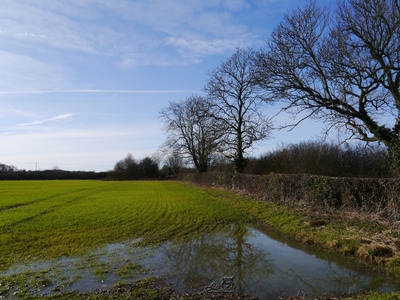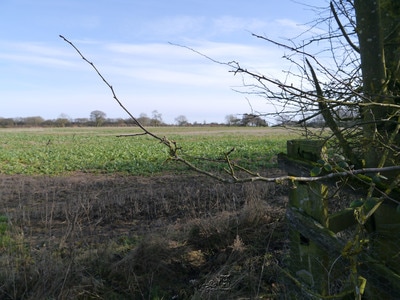writes the Duke of Milan's ambassador to France on Edward IV's prospects of retaking England.
|
"It is a difficult matter to go out by the door and then try to enter by the windows. They think he will leave his skin there." writes the Duke of Milan's ambassador to France on Edward IV's prospects of retaking England. It was in the second week of March 1471 Richard Neville had received news that ships flying the Yorkist banner had been spotted off the coast of Norfolk, and on this day the 14th of March, Edward, William Hastings and Richard, Duke of Gloucester had arrived at Ravenspur on the east coast of England, the very port Henry IV had landed seventy years before to claim the English throne
0 Comments
On the 10th of March 1513 occurred the death of John de Vere, the 13th Earl of Oxford. Oxford was at Barnet with Richard Neville in 1471, he escaped to France, but was back in the country by 1473 seizing St Micheal's Mount in Cornwall. Following his surrender of the island, he fled once again to France but returned 'with a vengeance' as the saying goes after joining Henry Tudor's cause.
He was an important player in Henry's taking of the throne at Bosworth in 1485 and the defense of it a year later, he was at the head of the forces against the Cornish Rebellion at Blackheath in 1497. Under Henry's reign Oxford was involved in the Warbeck and Tyrell affairs, and with country stable, he died in his seventies at Hedingham Castle, one of the few men to die of ill health and not on the Wars of the Roses battlefields. I am always a little sad when it comes round to the 16th March, and the anniversary of the death of Anne Neville. This is because it is so difficult to find facts about her other than she was the wife of Richard III, daughter of the King Maker, an heiress to a vast estate and dead at twenty-eight under a solar eclipse so the story goes. If I cannot find the real Anne Neville in words, then I can find her in art, and Edwin Austin Abbey's 1896 painting Richard Duke of Gloucester and Lady Anne does just that. I really love this painting. I love it even though it depicts Richard as the hunchbacked villain we know he wasn't. For me, this painting is all about Anne, see how beautifully she is drawn. Anne looks confident and determined, she is striding and moving fast in a effort to keep her distance from Gloucester, just look at how her black mourning veil covers the whole of her colourful, ermine edged dress. But what I find most interesting is, at first glance it appears that it is Anne who holds the halberd, when it is in fact the guard behind her, she is holding it as if she will do away with Gloucester with one stab of its blade. We know that Anne didn't hate Richard, that was Shakespeare's take on their story. We also know that Richard and Anne were acquainted in childhood, they were two people who were comfortable with one another whose marriage, had it continued, might have been a successful and happy one. In this one moment, perhaps we can see the real Anne Neville, not the mouse of a women we are lead to believe she was. Anne had been married, at just fourteen, to the heir to the throne of England, the son of Henry VI and Margaret of Anjou for just five months and widowed in the May of 1471. She soon married Richard, Duke of Gloucester and their son Edward, born in the December of 1473 was dead by the age of ten. Like a lot of medieval women, Anne's private life has passed undocumented, only the facts that linked her to the main events of the time are written of, leaving very little of her for us to get to know. At not yet twenty nine, Anne died on the 16th March 1485. According to Oppolzer's Canon of Eclipses on the 16th March 1485, the whole of southern Europe experienced a total solar eclipse. If Anne's death, wasn't devastating enough for Richard, then the blackening of the sun must have filled him with extreme foreboding, after all, the phenomenon of three suns, known as a Parhelion, that appeared at the battle of Mortimer's Cross in 1461 had been an inspiration to the troops and seen by his brother, the future Edward IV, as a good omen on his future reign. How very significant this eclipse must have been for poor Richard.
Anne died probably of tuberculous and is buried at Westminster Abbey by the High Altar, no doubt Richard intended a grand monument in her honour, but because of his tragic death at Bosworth five months later her grave was left unmarked, it was ignored by the new Tudor king, possibly in an effort to wipe her from history as he did with Richard III. The Battle of Losecoat Field, which took place on the 12th March 1470, occurred ten years after Edward IV had brought the Lancastrian's to their knees at Towton, even so, Edward was still concerned with Lancastrian plots, he was, it seems, blind to the fact that Richard Earl of Warwick was cunning and we can be sure that Warwick was clever enough not to be seen to be involved in plotting the downfall of the House of York. This battle, also known as the Battle of Empingham, was not simply a matter of York vs Lancaster. The situation was complex and confusing and involved minor rebellions, local land disputes and Warwick's machinations. The trigger for the battle itself was a private dispute between Lincolnshire land owners, Sir Thomas Burgh of Gainsborough Hall and Sir Richard Welles of Eresby, that had ended in violence and criminal damage. Both men had been called to London to account for their actions, Edward was forgiving and lenient, and ordered them back to Lincolnshire to put an end to their differences. Richard Welles left this meeting with the king unnerved, it may have been the threat that if Welles did not sort out this private feud, then he would come up the Lincolnshire to do it himself. In Lincolnshire, Welles son Robert was using his father's summons to London to add weight to Robin of Redesdales claim that Edward was ready to execute anyone who had been involved in the revolts in Yorkshire the previous year. Redesdale, the second of that name, was using this threat to incite fear and rebellion among the populous. In the hours and days following the meeting the situation deteriorated and for whatever reason, the feud or the escalating violence, Edward was forced to ride to Lincolnshire to put a stop to the rebellion. The resulting battle was fought on the fields in Rutland, not far from the village of Empingham, on a site that straddles the Great North Road. Losecoat was a victory for Edward, and a death sentence for both Robert Welles and his unfortunate father. The battle is named after the place where many of the rebel army fled, abandoning their surcoats for fear of retribution. All that really remains of this small, but significant battle, is a small wood, seen in the image on the right, with just a few hundred trees called Bloody Oaks. Neither the Earl of Warwick or George, Duke of Clarence's names were never officially mentioned, but it is plain to see that Warwick was the puppeteer. Letters, incriminating Warwick, that were found in a chest that was recovered among Welles belongings goes someway back up this fact. Following Welles arrest and in his confession he writes “ I have welle understand my many meagges, as welle from my Lord of Warwicke, and they entended to make grete risinges, as forthorthy as ever I couth understand , to th’entent to make the duc of Clarence king…..Also, I say that had beene the said duc and erls provokings that we at this tyme would no durst have made eny commocion or sturing, but upon there comforts we did what we did”......Also, I say that I and my dadier had often times letters of credence from my said lordes.” It is not hard to imagine what the state of the country was in, anarchy would possible be a good word to describe it. While most were troubled by the events of 1469 and 1470, the triumphant Richard Neville was in his element as he later placed the crown of England, once again, on the head of Henry VI. Released from the Tower of London, the poor man’s physical health was weak and his mental health clearly unstable. As these two men stood together it was obvious to everybody who was in charge. Real power was now in the gauntleted hand of Richard, Earl of Warwick, the King’s Lieutenant of the Realm.
On the 6th March in 1340 John of Gaunt was born at the Abbey of St Bavon in Ghent in modern day Belgium. He was the son of Edward III and Philippa of Hainault, and at the height of his career he was the most powerful man in the kingdom. He became Duke of Lancaster on the death of Henry of Grosmont in 1361. He was married three times, firstly in 1359 to Blanche of Lancaster, the daughter of the aforementioned Henry of Grosmont, secondly in 1371 to Constance of Castile, and thirdly in 1396 to Kathryn Swynsford. Gaunt's marriage to Blanche of Lancaster resulted in the birth of Henry of Bolingbroke, later Henry IV. Henry of course would force the abdication of his cousin Richard II, and in doing so usurp the throne in 1399. Gaunt's marriage to Constance of Castile is written about less, but it is played out in the descent of the kings of Castile. During his marriage to Constance, by whom he had a daughter Catherine, Gaunt would spend twenty year attempting to claim the throne of Castile, he would ultimately succeed if only via the marriage of Catherine to Henry a prince of Castle, who would become king in 1390.
It is Gaunt's relationship, and eventual marriage to Kathryn Swynsford that he is mostly remembered. This relationship resulted in four children who would bear the name of Beaufort. These children and their descendants would be prominent players in the Wars of the Roses. |
Categories
All
Archives
May 2024
|














 RSS Feed
RSS Feed
